Existing User Log In
New User Registration
Register for a free account to gain full access to the VGChartz Network and join our thriving community.



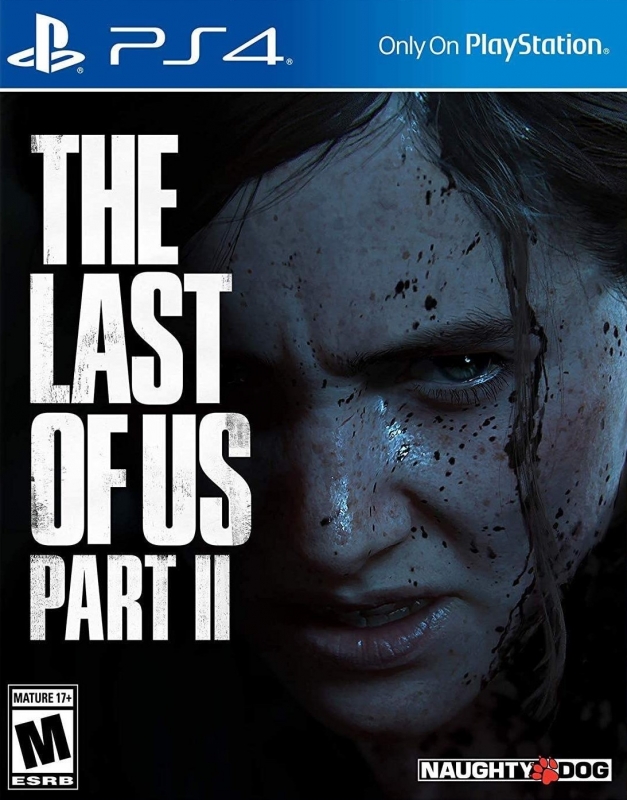

America - Front


America - Back

[Reviewer's Note: Due to what I found to be overbearing NDA rules for a review code, my thoughts on this game will be more expansive than what's been discussed across most outlets. That isn't to say this review is heavy in SPOILERS (except for the first game's ending); only that some understated story details may be things you wish to discover for yourself. Discretion is advised.]
It goes without saying that The Last of Us Part II is among the most anticipated sequels of this generation. After cleaning up on critical & commercial praise during 2013, all it would take to hear ecstatic crowd cheers would be a Firefly insignia painted on a stop sign. As someone who considers The Last of Us and subsequent Left Behind expansion to be among Naughty Dog's best work, I was sold on wherever they wished to take it. The direction towards examining hate, as initially described by creative director Neil Druckmann, does lead Part II to creative and brazen avenues, but the execution leaves me something to be desired.
The real-world-inspired Cordyceps rages across the world, leaving anyone vulnerable to becoming infected with a simple bite, scratch, or the inhalation of spores. You play as Ellie, an immune girl who left a Firefly medical hospital with her adoptive father, Joel, under troubling circumstances at the end of the first game. Both have settled in Jackson, Wyoming since the event. Now, several years later, a heinous act inspires Ellie to seek retribution, along with several other side characters. Players also control a new character named Abby, whose actions are melded in with Part II's central themes.
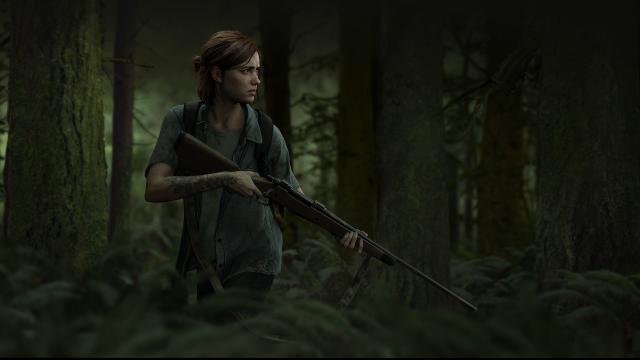
If I could bottle my thoughts about this sequel's narrative it'd be this: thematically poignant and narratively lopsided.
The opening scene works brilliantly in setting the stage. Joel talking with his brother Tommy about what he's done accomplishes two things: gives context to the audience about The Last of Us' protagonist and sets him up for examination. What could've easily been a safe Joel 'n Ellie journey with an Uncharted-like ending is instead interested in examining the cycle of violence in gruesome detail. No character is truly safe from their actions, and the way this is depicted through Joel, Ellie, and Abby's physical and emotional toil is one of my favorite aspects of the story. If you're one of those who found the first game's ending poetic (as I do), you'll likely find this aptly-named Part II to be the next stanza, carrying the previous baggage along forward.
As with the first entry, Part II is still interested in assessing the lines people draw between in-groups & out-groups—as suggested by the series’ title. Despite being on unequal footing, putting players in Abby's shoes to reconcile with how similar she and Ellie's worlds are is one of the best storytelling tools Naughty Dog manages. What's the extent of their factions with respect to kids, education, communal bonding, and more? There are an incredible amount of parallels between these two, up to and including their retributive motivations. A few scenarios where your perspective character's anger feels so tangible that you—momentarily—want their 'target' dead highlight just how committed the team is to this dynamic.
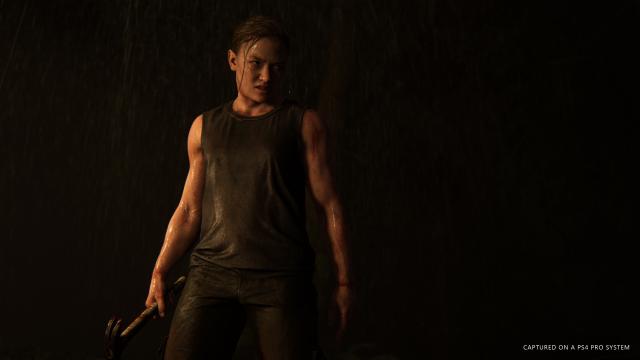
I'll freely admit I wasn't initially digging Abby's inclusion, hulking shoulders and all. Over time, I came away invested in her character arc. Outside of having the pre-requisite 'Save the Cat!' moments for audience sympathy, I appreciate the near-parallels she shares with Joel: a recalcitrant hardass whose newest 'family' member(s) instigate their road to personal redemption. It's also a bonus that Abby's kid/teenage companions are the rare side characters I enjoyed interacting with. How their traumatic tales and established beliefs challenge Abby's pre-conceived biases harmonizes with the story's themes.
I came away appreciating where the writers went with the three most integral characters. Seeing how Joel rubs off on Ellie during her most bloodthirsty moments for revenge, despite making rookie mistakes all the while, is the kind of difficult examination the story needed. The times Joel has with Ellie are like a kaleidoscope of warm and depressing colors; the messiness in both the present timeline and flashbacks are among its best moments. These considerations, along with Abby's growth and importance, lead to a conclusion I admire the more I mull it over. The best way to explain my incrementally growing appreciation would be this: what we may think is better for these characters isn't what's necessarily better for the grander story.
It should go without saying the story is bolstered by exceptional performances as well. Troy Baker, Ashley Johnson, and Laura Bailey give their all, and the supplementary cast isn’t that far behind. Reprising the composer role, Gustavo Santaolalla and co. have a pitch-perfect soundscape married to the tone and motivation of so many scenes. The performative qualities for the story are practically a given with this studio, so this is more of a validation of what practically everyone already knows.
Ah, but with all this positive momentum it's time to [CUT TO BLACK] and focus on the negatives now.
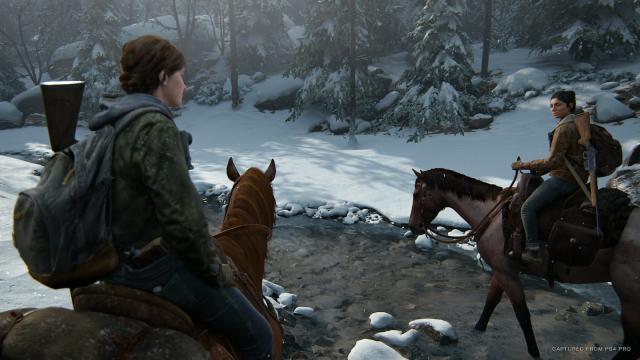
Part II may have the most exasperating videogame story structure since Beyond: Two Souls. What makes this so frustrating is just how unexpected it is from both the series' and writers' usual pedigree. It's one thing to discuss pacing & structural issues involving a writer who may as well be considered "French Neil Breen" at this point, it's another coming from someone who's consistently competent. The haphazard pacing and a missing sense of place during Chapter 1/Prologue makes it feel longer than it should; even after that, Seattle Day One (Ellie) is only casually interested in hitting the gas pedal.
As creative and interesting as Abby's storyline is, it also houses the most fundamental problems. There are flashbacks intermittently scattered between both leads. That's fine on its face, but the issue becomes more prominent when there are sporadic flashbacks within flashbacks slowing down the plot even more. I'm also not a fan of wasted narrative build-up. Having some of Abby's most critical hurdles resolve so inconsequentially felt like several wasted hours. The thematic buildup of humanizing 'foreign' groups becomes muddied in the final chapter as well.
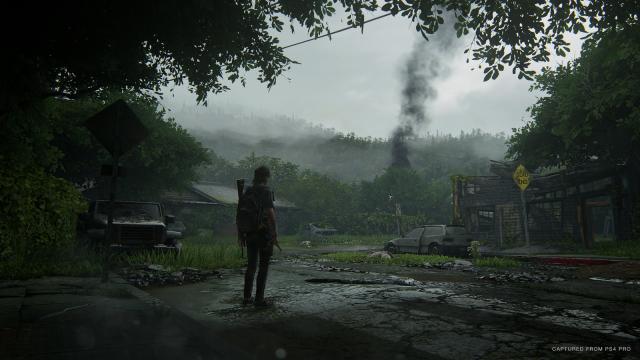
There are other general complaints I have when comparing it to its predecessor. The most prominent being the downgraded quality of the expanded cast and character dialogue. The first’s subdued approach to aspects like relationships or LGBT themes are often replaced with wince-inducing moments more fitting for a soap opera. Bloat extends to its cinematic affectations as well. Between this and Uncharted 4, it's annoying to think of the staggering increase in cutscenes along with belabored walking bits Naughty Dog seems content to put players through. Speaking as someone who typically enjoys hunting down supplementary story content, there were several points where its plodding structure became so tiresome. Finally, its approach on the cycle of violence was occasionally ham-fisted, especially with respect to visibly pregnant women and dogs. These moments feel so cloying in their finger-wagging towards the player, especially when compared to Spec Ops: The Line.
Part II is a strange narrative to examine. I'm with the creative, genuine intentions being explored in this revenge tale. The consequences of self-imposed retribution, the power of forgiveness, and the humanization of the 'other' group are all potent ideas explored in a way respecting the legacy that came before. Yet, I'm at a total loss as to why they thought this was the best approach. At times, it feels more like a confused collection of scenes still waiting for an editor to rearrange.
With the messy narrative considered, let's wind back the clock to discuss what’s between story beats: the ultra-violent gameplay.
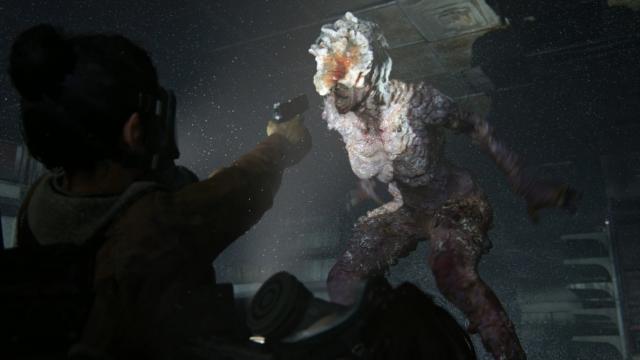
The Last of Us' template could be summed up as scavenger stealth-action: a confection of third-person shooting and action-adventuring of Uncharted mixed with streamlined survival-horror. While it didn't always nail the insanely-scripted E3 demo, the gameplay loop tied with its high production values always felt rewarding for me. Considering its chest-high cover and stealth emphasis, it also brought a great nuance to the fore: real-time crafting and inventory management. Today's technology enables this more easily, but this was a fundamental glue in making split-second action decisions feel like combat puzzles. It had a special ebb-n-flow that clicked so well on higher difficulties.
If you were on the precursor’s wavelength, Part II will impress with both its expansions and fixes— and maybe change some naysayers' minds too. The first notable difference is less about a singular mechanic and more about having a greater combat vocabulary. The ability to go prone, dodge, and jump (instead of clamber) means your opportunities for hiding and fighting are less constrained. Now, trimming enemy numbers can be done by crawling in tall grass or under military trunks, slinking through drywall gashes, swimming underwater, or attaining vertical advantages. Although some are better explored than others, these changes go a long way in making level design and AI feel more complex.
This complexity can be most appreciated during stealth. For one, the distracting THOMP THOMP noise of your companion's boots and their immersion-breaking moments of staying undetected when bumping into enemies has been pared down. They're much smarter in avoiding obvious detection (despite still being invisible to enemies in stealth mode) and helpful in getting out of jams. Enemy patrol patterns can feel tougher to pin down; they often keep their heads on a swivel, vocally give updates on their search, and investigate your best prone spots. I've noticed some hoopla about human enemies shouting their now-dead comrades’ names to make you feel a bit of remorse, but I found that addition believable for this atmosphere.
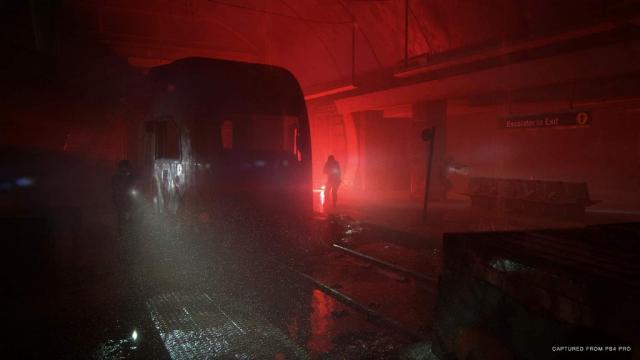
If there's one stealth issue that hasn't been upgraded it’s the mechanical simplicity. It is still one-dimensional with focus given to line-of-sight. Although sound mixing for stealth kills is quieter here, there are times enemies' selective hearing for tossed bricks and bottles breaks believability in twain compared to some of your actions. I'm also not a fan of Part II's 'grey area' for detection—having played and completed on Hard. Aside from the 'Scar' faction, the 'suspicious AI' stage is generally forgiving, and it's easy to exploit enemy herding (getting them just suspicious enough during another stealth kill to lure them over).
The action side succeeds at being a scavenger's power fantasy. The most distinct way comes from the gruesome animations, impressive visual fidelity, and impactful sound design. Part II is without question one of the most brutal shooters I've played. And it's not another splatterhouse in the vein of Gears of War's or DOOM's over-the-top violence. Molotovs and bombs are capable of clearing entire rooms of enemies, and their final desperate screams have this sickening texture to them that mirrors actual agony. There are dozens upon dozens of death animations and sound queues spanning from throat slashes to explosive arrows that provide an unflinching lens to this world’s brutality.
I felt uncomfortable relaying those descriptions in the previous paragraph so clinically, which I think is a success for Part II. Every shot taken by your protagonist intuitively makes you hate anyone who dares cross your path. You grit your teeth, aim for the head, and a successful hit results in blood and brain matter occupying whatever is behind your victim. You want to maneuver through the morass and dilapidated buildings of Seattle to use your arsenal against every faction, human or otherwise. For all the scripted heavy-handed moments scattered throughout, the moment-to-moment gameplay does a more consistent job of showcasing Ellie's thirst for revenge.

Mechanically, shooting and brawling feel more detailed and varied. Expanding upon Left Behind, the enemy vs. enemy vs. you scenarios feel more organic and provided some of my favorite gameplay moments. The heightened focus on verticality enables more potential in attacking & being attacked. The cycle of scavenging for supplies, on-the-fly crafting, and re-pursuing remaining enemies leads to harrowing instances of escaping with the last of your ammo and supplies. Admittedly, traits like default prone movement and more feel arbitrarily diminished so you have to invest in RPG-lite training manuals; then again, the exploration rewards in finding said manuals are always tantalizing and are typically accompanied with collectible notes that provide more backstory of someone's life after The Outbreak.
The one aspect to receive the least significant improvement is puzzle design. Ladders and moving Ellie on pallet rafts serve an expository purpose in the first, but they were rarely exciting breaks. Thankfully, those and dumpster-hauling have been diminished; rope-oriented conundrums take center stage this time around. Although simplistic, it's a step up since some introduce multiple ways to reach a new area. Besides those, safe-cracking requires little more effort than looking around the room or the room adjacent and inputting the combination. It's like Naughty Dog was worried having a moderately taxing puzzle would further disrupt the game's pacing.
There are several miscellaneous aspects I either liked or disliked. One nice positive is the supplementary guitar-playing mechanic where swiping the touchpad is like strumming guitar strings. Using the control stick and L1/R1 in tandem to hit different chords enables you to accurately play your own guitar solos. I also appreciated the similarities & differences between Ellie and Abby's arsenal: the former emphasizing a survivalist mentality whilst the latter a more militarized emphasis. A personal qualm I had was the de-fanging of Clickers since Ellie's butterfly knife leaves the predecessor's Shiv utility dynamic up to Abby's sections.
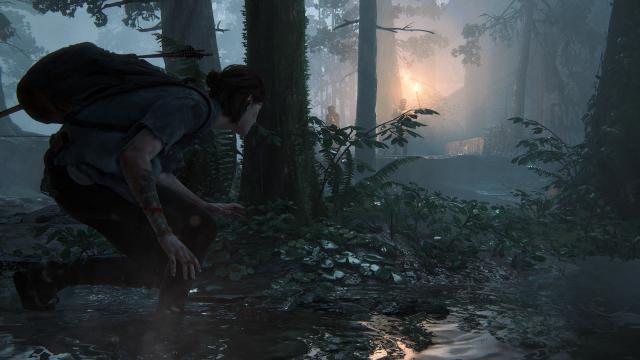
In sum, Part II's gameplay creates a harrowing routine. Areas feel more sprawling which leads to more organic engagements, the increased level of detail makes up-close encounters more visceral, the new Infected and other enemy types are refreshing challenges, fleshed-out enemy vs. enemy battles add a heightened level of dynamism and atmosphere, and the plethora of accessibility options are more dense than many PC games' graphical choices. There are issues to be raised across stealth, puzzles, occasional AI path-finding, and more, but the combat can really sing when the odds are stacked against you.
Value is an interesting dilemma when compared to the first game. Although Naughty Dog plans to release a multiplayer mode in the future, Part II decided to remain wholly focused on the campaign, a new game+ mode, and optional goodies to unlock, such as concept art and 3D character models. I can't help but feel this beefier 25-30 hour campaign was padded as a means to make up for that loss. When I assess this from a distance, I'm left embittered by Part II's languid pacing and overwrought exposition trudging us through as much background detail as possible.
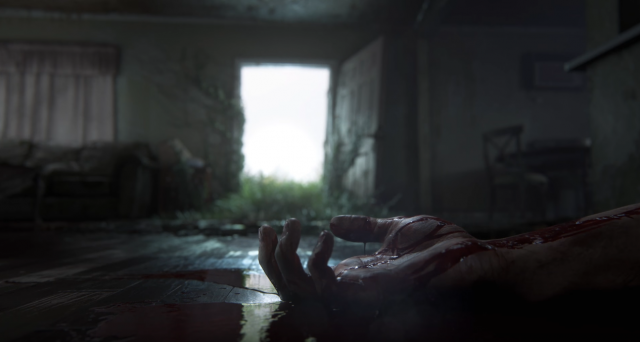
The Last of Us Part II is one of the most fascinating blockbusters of the year. It refashions its predecessor's templates, in narrative and gameplay, with greater complexity. But the dare is an uneven success. Naughty Dog has created another technical marvel that can be so easily appreciated during gameplay or cinematics, and is sure to take home end-of-year awards in that department. It's tougher to admire artistic elements, such as great actor's performances, when they're bogged down by such a frustrating narrative. It's a story trying to plunge into bleak territory and take cherished characters down creative avenues, but disrupts that endeavor with a disjointed structure, less-consistent side characters, inconsequential plot threads, lethargic pacing, and some sophomoric methods of addressing player violence. It's impossible to forget how annoying those issues are, but the net positives made me willing to forgive.










|
|
|
|
|
CarriedLawyer45
posted 14/01/2021, 08:33
FYI: If you don't like Tlou2? That's fine. Me and Naughty Dog aren't forcing you to like the game. Message | Report |
|
|
|
|
|
CarriedLawyer45
posted 11/01/2021, 05:48
I really like this Video Game that Naughty Dog made. Message | Report |
|
|
Strifelife
posted 12/12/2020, 10:08
Has this game sold only 4 million copies? Should be maybe updated? For example Ghost of Tsushima has sold 5 millions even thou it was released later. Must be something wrong with statistics. Message | Report |
|
|
|